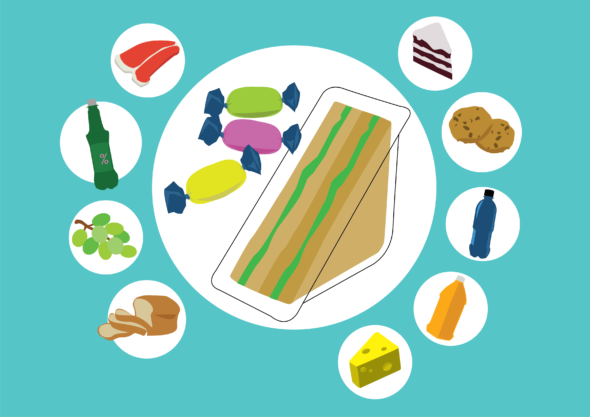In the Package-Heroes research project the packaging materials used in food products in grocery stores were analysed. The analysis identified the product groups in which there is a clear need, and also most potential to reduce the amount of plastics in packages. The Plastics Roadmap for Finland and EU’s Single-Use Plastic Directive provided the starting point for the analysis.
Human actions are causing the ever-increasing plastic littering problem as well as the climate change. The use of plastics in the food packaging industry will be regulated more intensively in the future. For instance, the EU’s Single-Use Plastics (SUP) Directive sets several restrictions for the SUP use also in the food packaging, which is hoped to diminish the negative environmental impacts, such as littering.
Substituting plastics in the food packaging is challenging for instance due to the superior barrier properties of plastics compared to, for example, fibre materials. In consumer packaging, substituting the plastic should not increase the amount of packaging material in retail or transportation, nor reduce significantly the shelf-life of the food.
Taina Lahtinen’s Master’s thesis, commissioned by the Package-Heroes research project, analysed the packaging material of the single food items sold in the Finnish supermarkets, by categorising the data into product groups and analysing the obtained product data further. “Based on the analysis we identified those product groups where the reduction of plastic packaging material is most efficient and impactful when the Plastics Roadmap for Finland and EU’s SUP directive are considered. This could happen either by substituting the plastic packaging by fibre-based biodegradable materials, by reducing the amount of packaging material used, or by enhancing the recycling of packaging material for instance by a deposit system”, explains Taina Lahtinen, postgraduate from the Faculty of Agriculture and Forestry in the University of Helsinki.
Differences between the product groups
The results of the analysis indicated differences between product groups. Few examples of the results:
- The reduction of plastics as packaging material would have the most impact in the product groups of Candies (sugar) and Meals/products (ready to eat). These product groups use various polymer types as packaging material. Additionally, some of the polymers are difficult to recycle therefore creating a significant risk for littering. In these product groups also the sales share (% in euros) is high and they are strongly affected by the EU’s SUP directive.
- The share of plastics as packaging material is also high in product groups such as Unprocessed meat, Processed meat, Sausages, as well as Fruits and vegetables (fresh). In these product groups the amount of packaging material has already been reduced to some extent. For meat products, one possibility to substitute plastics is the meat packed at the supermarkets with a very short shelf-life. In these packages expanded polystyrene is still used a lot and it is difficult to recycle.
- The share of plastic as packaging material is also high in product groups of Flavoured drinks (ready to drink) and Energy and sports drinks. In Finland these packages are efficiently recycled through the deposit system. Therefore, substitution of the plastic in these product groups is not of a primary importance.

Results enhancing the development of novel packaging solutions
The recent research has concentrated on finding novel solutions to replace conventional plastics as the packaging material.
“So far there has been very little data about the amounts and shares of different food packaging materials in each product group. The analysis made in our project provides this missing information and supports the research and development of the future packaging solutions. This data helps to focus the research on specific product groups”, states Kirsi Kataja, Project Manager of the Package-Heroes research project and the supervisor of the thesis from VTT.
The environmental effects of the food packages – especially littering and its prevention – should be considered more carefully in the future. The development of the food packages requires careful analysis and calculations throughout the whole lifecycle of the package. The most important starting point for the development work is always to secure the food safety and to prevent food waste.
| The data of the thesis ”Food packaging atlas of a supermarket to identify replaceable and replace worthy plastic” is based on the product data provided by the GS1 Finland, and on the sales share (%) of the total sales volume (in euros) for each product group provided by the Finnish Grocery Trade Association (PTY). The thesis identified those product groups, where the share of plastics in food packaging is high and the EU’s SUP directive or other pre-determined criteria (such as packaging material weight in grams, sales share, suitability of the material for recycling) create a need for a change in the use of the current packaging material. The thesis was made for the Faculty of Agriculture and Forestry in the University of Helsinki, and it was approved in November 2020. |
